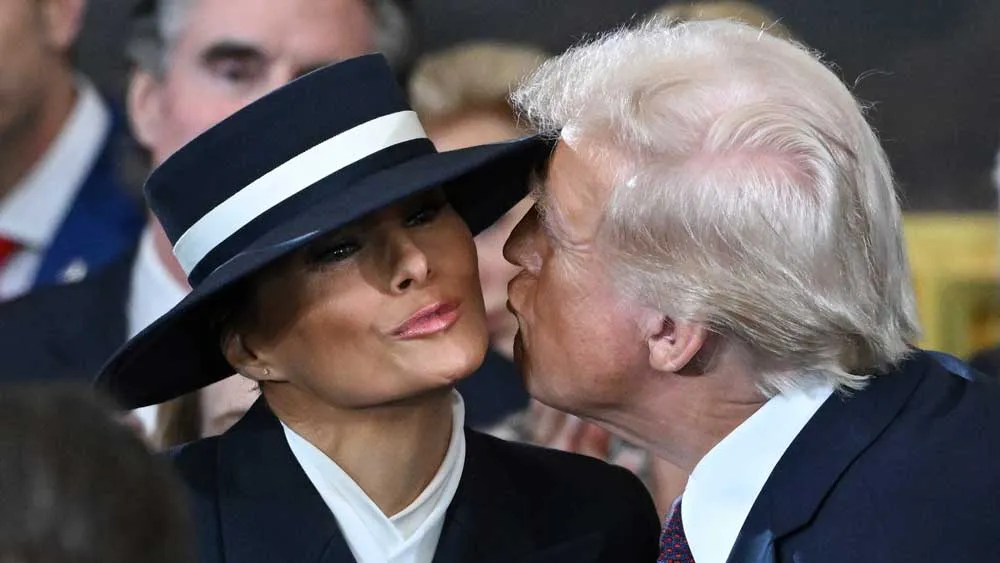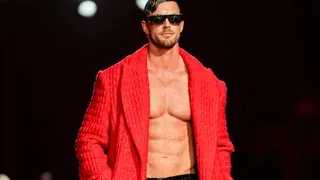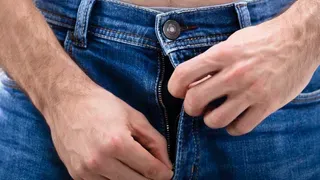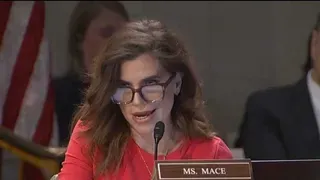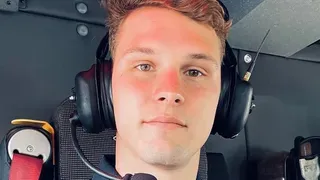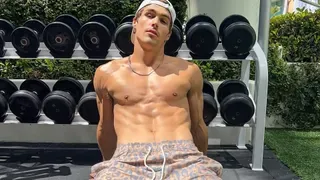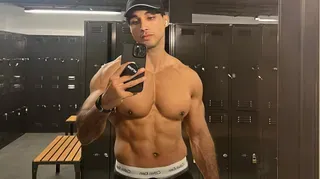Jan 30
Filmmaker Bruce David Klein on How Liza Became Liza (With a Little Help from her Friends)
Robert Nesti READ TIME: 14 MIN.
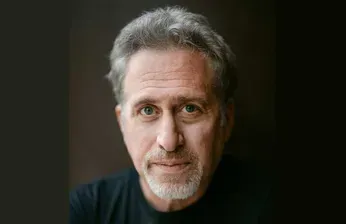
Source: Courtesy of Atlas Media Corp, A Zeitgeist Films Release in Association with Kino Lorber
EDGE: How did you come up with the title?
Bruce David Klein: In the end, I felt very strongly that the title should come from her. And in the film, she talks about working with Fred Ebb, who wrote the patter for her in "Liza With A Z," and she says, "I have a truly terrific, absolutely true story for you." So it kind of all worked. And I always, for some reason, seemed to be partial to longer titles. That's probably stupid, but I just I like ones that are full of meat.
EDGE: When I saw the film in Provincetown, you said you chose to include a lot of footage of Liza in the 1970s when she is an electrifying performer to counter the image of her as the woman in the wheelchair at the Oscars in 2022. Why was that important for you?
Bruce David Klein: Well, the film came about after we were alerted by Liza's people that there were hours and hours of 1970s footage in Liza's vault. That footage is one of the reasons we – my co-producer and myself – wanted to make the film. Watching it, our jaws just dropped. It reminded us of the explosive talent she was in the 70s. So it was a no-brainer that if you're doing something on Liza, you need to dive in to the 70s. But we felt we needed a perspective. The "Cabaret" story had been told; the "Liza With a Z" story had been told; the "New York, New York" story had been told; which is how we came up with this counter narrative about her mentors.
EDGE: Yes. You tell the stories of how many of these artists – Kay Thompson, Fred Ebb, Bob Fosse (amongst others) – were instrumental in shaping Liza's career after the death of her mother, Judy Garland, in 1969. Where did that concept come from?
Bruce David Klein: I must give credit where credit is due. In part from Liza herself. One of the things I often say in the Q&A sessions I have at screenings is that she is one of the most generous celebrities I have ever met. She constantly says of these mentors, "he invented me" or "she invented me." I remember asking her about Fred Ebb, and she stopped my question. "Oh, Fred invented me!," she said. And it all clicked for me. That is the way she sees herself. She was lucky enough to find and nurture these relationships with geniuses who fueled her unique take on performing. It was after the death of her mother that she was able to spread her own wings, but that came through the help of these geniuses. And their stories are an important part of how Liza became Liza.
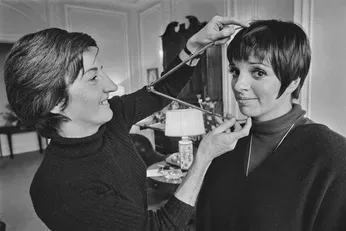
EDGE: Had you met her before you made the film?
Bruce David Klein: No. Although I saw her in concert, most memorably at the "Liza At The Palace" in 2008. That just completely blew my mind, both for her performance and the audience's reaction to her, which was just to witness this ocean of love for as a performer I had never seen this before. I remember watching that reaction and thinking that this woman has such a profound connection with her fans that goes way beyond whether they like her singing a song or the way she dances or if they liked her in a movie. This is a profound, deep human connection, and it wasn't until really going through all the footage and spending some time with her, filming with her, that I kind of made the connection of the power of her vulnerability, which is unique.It is a vulnerability that comes from her strength, her quirkiness, her larger than life persona, and her fearlessness in performance that just draws people to her.
EDGE: What was it like interviewing her?
Bruce David Klein: I think the two immediate take-aways of spending hours with Liza are, first, she is hysterical. She loves to be funny. And t she also just gravitates to anybody who's cracking a joke. And the second thing is, she absolutely smokes like a chimney. I mean, holy crap. She loves those cigarettes. And I think another endearing quality is something I have never seen in any famous person, that when you meet her, she wants you to love her. She wants you to be friends with her, so she's making sure that you like her. And it's very, very unnerving, because you're like, 'you're Liza Minnelli, I love you already.' But that is very, very important to her, that every single person in the room likes her and connects with her. She wants to be everyone's friend, and that that's something also that is really stand out. Obviously, it doesn't hurt that she has those dark saucer eyes staring up at you. But yes, she makes you feel like you were the only person of importance in the room, and that and that her friendship with you is important to her.
EDGE:What was in the footage you found in Liza's vault?
Bruce David Klein: A lot of stuff I had never seen before particularly in the 70s and 80s rightinto the 90s. She was constantly being interviewed. And she was constantly being photographed. And what we found in the footage was stuff that didn't exist anywhere else. We make mention that Liza was brought up in this kind of MGM world where everything was beautiful, but where no one ever show vulnerability, or ever reveal your true self. Celebrities would never been seen in sweat pants. They were always well-dressed. They were always made up. It was the world Liza grew up in, but after"Cabaret" and "Liza with a Z," overnight the Taylor Swift of her day. She was the 'it' girl of the moment. And she was always been filmed, so you see her when she's nervous riding in the back of a limo with Kay Thompson, or singing with her sister Lorna, or just washing her hair, and it is amazing to see. Today this is the stuff you find on Instagram, but back then it just wasn't part of being a celebrity. Her generation didn't do it. Careers and lives were very, very carefully, carefully controlled. So to see that of her in these moments when she is being very real, very vulnerable, very quirky, you really get to see who she is. And that's why we ended up really gravitating a lot towards the footage we found in that vault.
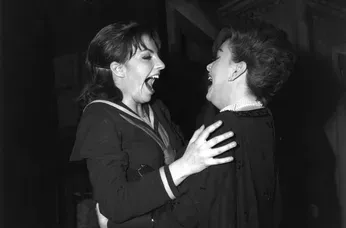
EDGE: How long was the first cut of the film and how difficult was it to remove stuff from it?
Bruce David Klein: It was like about four hours. But it wasn't the length; it was what we focused on, and that changed. We had a lot more on Judy, until we realized that this is Liza story. Everybody knows Judy's story. We don't need to retell Judy's story. There were things that got us into the 80s, and even into the 90s – great stories and great anecdotes and great scenes and stuff, but they didn't quite pertain to the story we were telling. The process was like that of a sculptor, who starts with the clay, and the clay is four hours long.You trim and pull things out, you make a new eye, then when you don't like that one, you make another. But I thought it important that we keep it close to 100 minutes, because I don't want audiences to lose patience.
EDGE: What is alarming is how harshly she was treated by the press. Even after she became a major star and was touring Europe, they would ask questions like did she mind being ugly. They literally showed her no respect.
Bruce David Klein: That's an interesting point, and that is an important point, because essentially, in this early 70s era, she was seen as just being Judy Garland's daughter. It was pretty eye opening as we looked at some of these press conferences from the 70s and see how harsh they were. Questions like, 'Do you think sing as well as your mother?' 'Do you have movie star looks?' Or, 'What do you say when people call you ugly?' But then you see her answer these questions with charm and humor. That was really an eye opener. But don't forget at the time the press still thought of her as Judy Garland's daughter, and she had to live up to that. A lot of these interviews came when she was just coming onto her own.
EDGE: Was there a moment that she became Liza in your eyes?
Bruce David Klein: I don't know if you could say there was a single moment. But I think that from my point of view, the moment she became Liza was "Liza With a Z" in 1972 right after "Cabaret" came out. It was a one-shot television special with Halston doing the costumes; Fred Ebb writing the script and producing; John Kander writing the music to Ebb's lyrics; Bob Fosse directing it, and Kaye Thompson behind the scenes. So all of those people came together for this one night only experience. It wasn't a movie where Bob Fosse could tell her, do it again. This was it. She had one shot to show what she had. But go back and read the reviews. People were really stunned and breathless at the force of her talent. And she won an Emmy, right after having won the Oscar. So I think that was probably the moment, the singular moment when Liza became Liza.

Source: Courtesy of Atlas Media Corp, A Zeitgeist Films Release in Association with Kino Lorber
EDGE: You don't really delve into a film career all that much. Was that left out consciously on your part.
Bruce David Klein: It was the time we had originally a long section on "The Sterile Cuckoo," which I consider, you know, just a masterpiece of acting. I mean, she was nominated for Academy Award, but that occurred just before our storyline, and we could never figure out a way to fit in, because she had done the movie before Judy died; but the movie came out after Judy died, so it was kind of in that kind of Netherworld in terms of her career. The movies we obviously focused on were the ones who made her Liza – "Cabaret," and to some extent "New York, New York." But I definitely dropped "Arthur," which was cut for time because, again, it didn't fit the storyline. But I always tell people to watch "The Sterile Cuckoo," which was just a brilliant movie.
EDGE: How did the moment when she sings "The World Goes 'Round" with Michael Feinstein come about?
Bruce David Klein: Well, for obvious reasons whenever we interviewed Liza, we made sure there was a piano in the room, because you are always hoping that after we talk, she might sing some songs. So that was sort of planned, if you will. But in terms of the song, that scene actually went on for a while. She and Michael were fooling around at the beginning, just singing random stuff; but then I suggested, 'And the World Goes 'Round,' because I felt it is a song that resonates with her life. What was funny is that we had these guys on the set that afternoon – really big grip guys moving stuff around – and when she began that song, she became Liza before our very eyes. And as she was getting pumped while singing it, moving her arms and her hands, I remember turning and looking at one of these grip crew guys. He was the big, husky guy and he had tears streaming down his face. I mean everybody was crying because in that moment we were locked into this woman and this enormous talent that you just can't deny. And we were so happy that we were able to capture that.
EDGE: How did you choose the talking heads that you use in the film?
Bruce David Klein: We tried to only use interviewees who actually know Liza and have spent time with her. People know how close she is to Michael Feinstein, Ben Vereen, and Joel Grey; and how close she was to the late Chita Rivera. They are entertainers she worked with. People are surprised at how close she is to Mia Farrow. And they really don't know Alan and Arlene Lazare, who are not public figures but have been Liza's friends for fifty-plus years. (Note: Alan Lazare passed since the film was made. Both he and Rivera are acknowledged in the credits.) We wanted it to be intimate, and we tried to avoid too many cultural experts and that kind of thing and rely more on people who knew her, knew her as she was becoming Liza.
Watch this side-by-side clip of Liza Minnelli and Kay Thompson performing.
EDGE: And Kay Thompson, who was a seminal force in Liza's life and a spectacular performer. You need to make a documentary about her.
Bruce David Klein: It was instant love seeing her for the first time. When I watched the raw footage, I couldn't believe how one woman could make so many quips in such a short period of time. She had such a quirky view of life that greatly influenced Liza. I mean, imagine having Kay Thompson around you all the time?
EDGE: Has Liza seen the film?
Bruce David Klein: Yes, she has seen it. And she was very happy with it, very pleased that we highlighted her mentors. They are very, very important to her. Like I said, when you talk to her about herself, she quickly says that Bob Fosse taught me this, Fred Ebb taught her that, or Kay would suggest this. I think she was very pleased that that was the storyline that we chose.
EDGE: What do you think would have happened to Liza if her mother hadn't died when she did?
Bruce David Klein: I don't know what would have happened. I just know her life would have been extremely different. Liza would have been different. If you see Liza before her mother died. When you watch Liza perform, say on the Ed Sullivan Show before her mother had died, she was a lot more of a traditional performer. And for whatever reason that no one can speculate, when her mother died, she started letting loose in her own style, and being really courageous in her choices. Everything changed in 1972 with "Cabaret" and "Liza With a Z." But Judy Garland was worry for Liza and required a lot of attention. And as Mia Farrow says in the film, she required a lot of work.
"Liza: A Truly Terrific Absolutely True Story" is currently playing in New York and Los Angeles. It goes into limited release nationwide on January 31. For more information, follow this link.
Robert Nesti can be reached at [email protected].
